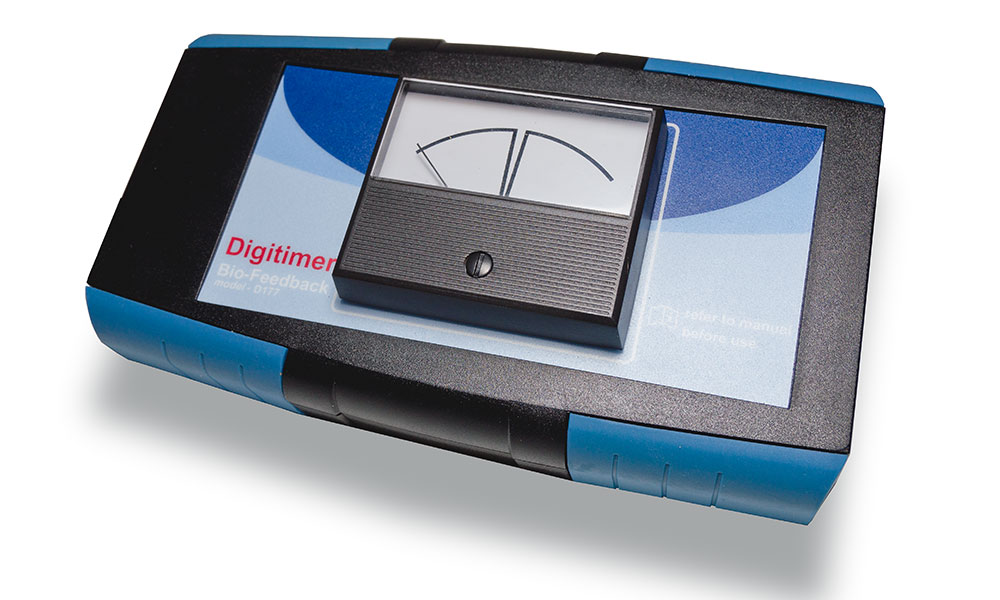Everything You Need to Know About Biofeedback Devices
What are biofeedback devices, what are they used for, and are they needed for biofeedback therapy? Find out everything you need to know about biofeedback devices today!
If a patient is experiencing symptoms or conditions like vertigo, dizziness, chronic pain, or Raynaud’s syndrome, investigating the involuntary systems controlled by the nervous system can bring valuable insights.
To investigate these conditions, medical professionals and diagnosticians might turn to biofeedback devices, which safely capture data on involuntary bodily functions to aid in diagnosis or further study.

What are biofeedback devices?
Biofeedback devices are used to measure the involuntary functions in the body. They are usually relatively unobtrusive, though this can depend on what is being measured.
The results of monitoring or testing can give valuable insight into how patients can improve many diseases or health conditions.
They can use a wide array of sensors to measure multiple involuntary systems, including:
- Breathing bands for breathing rates and patterns
- Pulsometer or EKG sensors for heart rates
- Surface electromyography (sEMG) sensors to study muscle movement and tension
- Galvanic skin response sensors (GSR) on the fingertips and palms for sweat monitoring
- Electroencephalogram (EEG) sensors which are applied to the scalp to examine electrical brain activity
- Skin sensors to monitor skin temperature fluctuations
Biofeedback devices, like the D177 Biofeedback Unit, display this information visually for accurate reading and recording.
Uses of biofeedback devices
VEMP testing
Traditionally, biofeedback devices, are commonly used in Vestibular Evoked Myogenic Potential (VEMP) testing for the diagnosis, study, or treatment of vestibular dysfunction.
This can present with a host of symptoms, like disequilibrium, imbalance, and vertigo, which can result in falls, especially for the elderly.
Biofeedback machines check the functioning of:
- The saccule – a bed of sensory cells in the inner ear that translates head movements into neural impulses that the brain then interprets.
- Otoliths – a structure in the vestibular system that acts as a sensor for detecting linear motion.
- The eighth nerve – cranial nerve VIII brings information about position and movement in space right into the brainstem.
This can allow for the study or diagnosis of conditions like multiple sclerosis, vestibular migraines, and superior semicircular canal dehiscence (SSCD).

In conjunction with other tests
VEMP testing with a biofeedback device can also be used in combination with videonystagmography (VNG) testing to evaluate, diagnose, and study conditions like vestibular neuritis (inflammation of the vestibular nerve) or Meniere’s disease (fluid abnormality in the ear).
In repeated testing
If your site needs to carry out repeated VEMP testing, the D177 Biofeedback unit allows for improved reproducibility, whether they have small or large electromyography (EMG) output.
The visual display also gives the subject a visual representation, in the form of needle movement on an analogue level meter.
Once the subject has made the initial movement and it has been adjusted so the needle will reach the centre of the display, no further adjustments will need to be made.
Another alternative use is to conduct biofeedback therapy.
What is biofeedback therapy?
Biofeedback therapy uses the results garnered from biofeedback devices on involuntary systems to propose changes in voluntary processes to counteract or control symptoms.
It’s not usually used as a standalone response, but it can deliver good symptom control for certain conditions such as:
- Anxiety, depression, and PTSD
- ADHD
- Chronic fatigue syndrome
- Chronic pain and other pain syndromes
- Constipation and incontinence
- Epilepsy
- Fibromyalgia
- High blood pressure
- Insomnia
- Headaches, including migraines
- Motion sickness
- Raynaud’s syndrome
- Tinnitus
During biofeedback therapy, the patient is asked to complete simple actions like changing their positioning, altering their breathing, or using mindfulness and focus while they are hooked up to the machine, to change their involuntary responses.
The long-term aim is that you will be able to complete the voluntary actions whenever you need them to control or lessen the involuntary symptoms you are experiencing.

Do you need a biofeedback device for your site?
For more information about our range of amplifier accessories or our D177 Biofeedback Unit, the expert team at Digitimer can help.
We specialise in electronic instruments for medical research and clinical investigations and work within the confines of full regulatory compliance – giving you peace of mind.
To find out more, you can give us a call on +44 (0)1707 328347 or send an email to [email protected] with your enquiry.
Alternatively, you can speak to one of our in-house experts who will get back to you as soon as they can with an application-specific recommendation that will suit your needs best.



